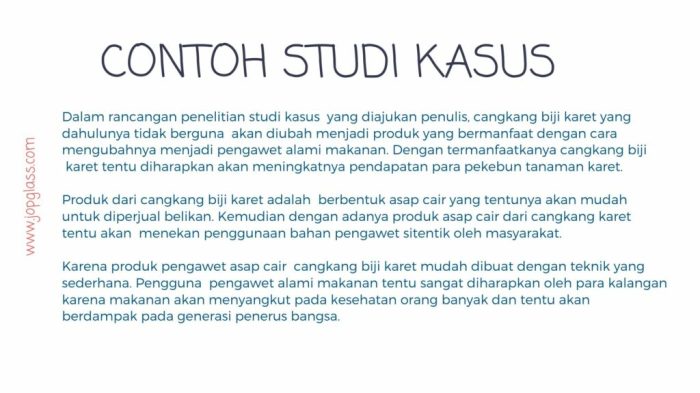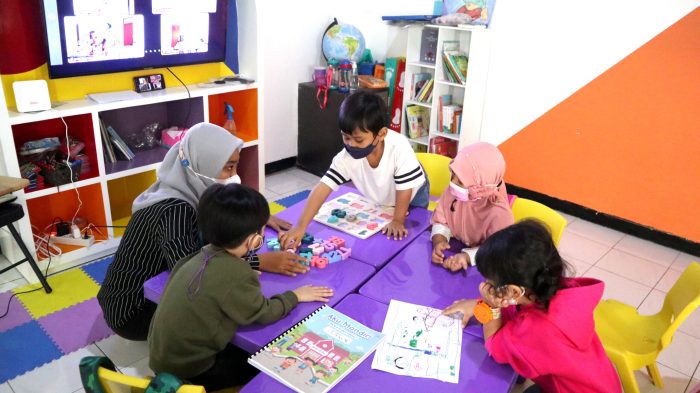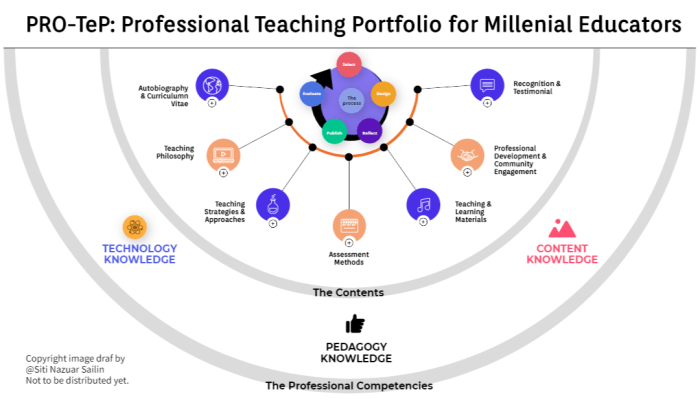Evaluasi Keberhasilan VR Dalam Pembelajaran Seni Patung

“Evaluasi Keberhasilan Penggunaan Teknologi Pembelajaran Virtual Reality dalam Pembelajaran Seni Patung” – Yo, what’s up, art peeps? VR in sculpting class? Totally mind-blowing, right? This ain’t your grandma’s clay anymore. We’re diving deep into how virtual reality is changing the game for sculpting students, from accessibility to actually making killer art.
Get ready to level up your artistic skills!
Studi ini mengeksplorasi efektivitas penggunaan teknologi realitas virtual (VR) dalam pembelajaran seni patung. Kita akan melihat bagaimana VR meningkatkan pemahaman siswa tentang konsep-konsep kunci, memfasilitasi kolaborasi, dan memberikan umpan balik yang personal. Kita juga akan menganalisis kendala teknis dan non-teknis, serta memberikan rekomendasi untuk implementasi yang sukses di berbagai institusi pendidikan.
Penggunaan VR dalam Pembelajaran Seni Patung
Yo, what’s up, art peeps? Let’s dive into how virtual reality (VR) is totally changing the game in sculpting. Forget dusty old studios and limited materials – VR is bringing a whole new level of awesomeness to the art scene.
This ain’t your grandma’s clay anymore!
Manfaat VR dalam Pembelajaran Seni Patung
VR offers major upsides compared to traditional sculpting methods. Think of it as having a super-powered, totally customizable digital sculpting studio at your fingertips, 24/7. No more messy cleanup, limited space, or expensive materials. It’s like having a cheat code for creativity!
Perbandingan Pembelajaran Seni Patung dengan dan Tanpa VR
Check out this breakdown – it’s a total game changer:
| Aspek | Pembelajaran Konvensional | Pembelajaran VR |
|---|---|---|
| Kemudahan Akses | Terbatas oleh lokasi studio dan ketersediaan material. | Aksesibilitas tinggi, bisa diakses dari mana saja dengan perangkat VR yang memadai. |
| Biaya | Biaya material, alat, dan ruang studio yang tinggi. | Biaya awal investasi perangkat VR yang signifikan, tetapi biaya operasional lebih rendah. |
| Efektivitas Pembelajaran | Proses pembelajaran lebih lambat dan terbatas oleh keterbatasan material fisik. | Proses pembelajaran lebih interaktif, imersif, dan memungkinkan eksperimen tanpa batas. |
Contoh Skenario Pembelajaran Seni Patung Menggunakan VR, “Evaluasi Keberhasilan Penggunaan Teknologi Pembelajaran Virtual Reality dalam Pembelajaran Seni Patung”
Imagine this: you’re wearing a VR headset, and you’re standing in a digital studio filled with virtual clay, tools, and even famous sculptures for inspiration. You can sculpt freely, zoom in and out to see every detail, and even experiment with different lighting and textures.
It’s like having a personal Michelangelo mentoring you!
Modul Pembelajaran Seni Patung Berbasis VR
Here’s a basic framework for a killer VR sculpting curriculum:
- Tujuan Pembelajaran:Siswa akan mampu membuat model patung 3D menggunakan software VR dan memahami prinsip-prinsip dasar seni patung.
- Materi:Pengenalan software VR sculpting, teknik dasar pemodelan 3D, eksplorasi tekstur dan cahaya virtual, analisis karya seni patung klasik dan kontemporer.
- Metode Penilaian:Penilaian portofolio digital, presentasi karya, dan analisis kritis terhadap karya siswa sendiri dan karya seniman lain.
Potensi Kendala Teknis dan Non-Teknis
Let’s be real, even the dopest tech has its glitches. Technically, we might run into issues with VR headset compatibility, software bugs, or limited access to VR equipment. On the non-technical side, things like cost, teacher training, and student digital literacy could be roadblocks.
Aspek Pedagogis Pembelajaran VR Seni Patung
Yo, what’s up, art peeps? VR in sculpting class? Sounds totally rad, right? Let’s dive into how this mind-blowing tech can seriously level up your sculpting game. We’re talking about how VR can boost your understanding of sculpting, make teamwork easier, and even give you personalized feedback – it’s like having a super-powered art tutor right in your headset!
Peningkatan Pemahaman Konsep Dasar Seni Patung
VR isn’t just about the cool factor; it’s a game-changer for grasping core sculpting concepts. Imagine being able to manipulate a virtual clay model, zooming in to examine proportions, tweaking angles, and experimenting with textures without the mess and hassle of real-world materials.
This interactive approach allows for a deeper understanding of concepts like scale, balance, and form in a way that traditional methods can’t always achieve. Students can explore different compositional styles and visualize the impact of texture changes on the overall aesthetic of their virtual sculptures.
The ability to rotate and view the sculpture from all angles provides a holistic perspective, enhancing spatial reasoning skills and promoting a deeper understanding of three-dimensional form.
Fasilitasi Kolaborasi dan Diskusi
Forget those awkward group projects where everyone’s just staring at the same lump of clay! VR opens up a whole new world of collaborative learning. Students can work together on a single virtual sculpture, each contributing their ideas and skills in real-time.
Imagine multiple students simultaneously sculpting different parts of a virtual figure, providing instant feedback and suggestions. This shared virtual space fosters a dynamic learning environment, encouraging communication and problem-solving skills.
- Real-time feedback from peers.
- Improved communication and collaboration.
- Enhanced engagement in group projects.
Langkah-langkah Penerapan Pembelajaran Berbasis VR yang Efektif dan Efisien
Okay, so you’re ready to rock this VR thing. Here’s the lowdown on making it work smoothly in your art class. First, you’ll need the right equipment, which might include VR headsets and sculpting software. Next, it’s crucial to integrate VR into your curriculum thoughtfully.
Don’t just throw it in there; plan how it will complement your existing lessons. Start with basic concepts and gradually introduce more complex techniques. Provide clear instructions and support to ensure students feel comfortable using the technology. Regular assessments will help you track their progress and make necessary adjustments.
- Select appropriate VR software and hardware.
- Integrate VR into the existing curriculum strategically.
- Provide comprehensive training and support to students.
- Implement regular assessments to monitor progress.
Perbedaan Pendekatan Pembelajaran Konvensional dan Berbasis VR
Traditional sculpting is totally legit, but VR adds a whole new dimension. With traditional methods, students are limited by physical materials and the time it takes to make adjustments. VR eliminates these constraints, allowing for rapid prototyping and experimentation.
This accelerates the learning process and encourages more creative exploration. The immediate feedback and iterative nature of VR can boost confidence and reduce frustration, especially for beginners. While traditional methods focus heavily on tactile skills, VR emphasizes visual and spatial reasoning.
| Metode Pembelajaran | Keunggulan | Keterbatasan |
|---|---|---|
| Konvensional | Pengembangan keterampilan motorik halus | Proses yang memakan waktu, keterbatasan bahan |
| VR | Eksperimen cepat, umpan balik instan | Ketergantungan pada teknologi, kurangnya sentuhan fisik |
Umpan Balik yang Lebih Personal dan Efektif
VR can provide incredibly personalized feedback. Imagine software that automatically analyzes a student’s virtual sculpture, highlighting areas that need improvement in terms of proportion, balance, or detail. This immediate and specific feedback is way more effective than a teacher trying to explain everything verbally.
It allows students to learn from their mistakes in real-time and refine their skills more efficiently. This tailored feedback fosters self-directed learning and empowers students to take ownership of their creative process. Think of it as having a personal sculpting coach available 24/7.
Aspek Teknis dan Infrastruktur: “Evaluasi Keberhasilan Penggunaan Teknologi Pembelajaran Virtual Reality Dalam Pembelajaran Seni Patung”

Yo, peeps! Let’s dive into the tech side of things – the nitty-gritty details of making VR sculpting a reality in your art class. We’re talking hardware, software, the whole shebang. Think of this as the ultimate VR sculpting setup guide, straight from the source.
Getting VR up and running for sculpting isn’t just about slapping on a headset; it’s about creating a smooth, immersive experience that everyone can rock. This section breaks down the essential components, potential challenges, and strategies for making it all work like a charm.
Spesifikasi Perangkat Keras dan Lunak
Okay, so picture this: a killer VR sculpting setup. You’re gonna need some serious horsepower to handle the 3D modeling and rendering. We’re talking high-end graphics cards (think NVIDIA GeForce RTX 30 series or AMD Radeon RX 6000 series, or even better!), a powerful CPU (Intel Core i7 or AMD Ryzen 7 or higher), and plenty of RAM (at least 16GB, 32GB is even better).
Your headset will need to be top-notch too – something like an Oculus Rift S, HTC Vive, or Meta Quest 2 will do the trick. Don’t forget about the controllers! You’ll need precise controls for sculpting. On the software side, you’ll need a robust 3D modeling program compatible with VR, such as Gravity Sketch, Medium, or SculptrVR.
These programs are designed for intuitive VR sculpting, offering a range of tools and features.
Peta Alur Pembelajaran Seni Patung Menggunakan VR
This flowchart shows the typical process of a VR sculpting lesson, from start to finish. It’s all about optimizing the workflow for a rad learning experience.
Tantangan dan Solusi Pengelolaan dan Pemeliharaan Perangkat VR
Keeping the VR gear in tip-top shape can be a bit of a hustle. Things like headset damage, software glitches, and keeping everything updated are all potential roadblocks. To address this, establish a clear system for handling repairs, software updates, and routine maintenance.
Designate a tech-savvy staff member or team to be responsible for maintaining the equipment. Regular cleaning of headsets and controllers is crucial to prevent the spread of germs. Consider creating a checklist for daily and weekly maintenance tasks.
Strategi untuk Memastikan Aksesibilitas dan Kesetaraan
Making sure everyone can get in on the VR action is key. This means considering students with disabilities and ensuring equitable access to technology. Provide alternative input methods for students with motor impairments. Offer assistive technology such as screen readers or alternative controllers.
Ensure that the software is compatible with assistive technologies. Consider providing individual support to students who need extra help.
Biaya Implementasi VR dalam Pembelajaran Seni Patung
Let’s talk budget. Implementing VR in your art class isn’t cheap, but the investment can be totally worth it. This table provides a general estimate of costs; actual figures will vary depending on your specific needs and choices.
| Item | Jumlah | Harga Satuan (USD) | Total Biaya (USD) |
|---|---|---|---|
| Headset VR (e.g., Meta Quest 2) | 10 | 300 | 3000 |
| Komputer (high-end specs) | 10 | 1500 | 15000 |
| Software Lisensi | 10 | 100 | 1000 |
| Pelatihan Guru | 1 | 500 | 500 |
| Pemeliharaan Tahunan | 1 | 500 | 500 |
| Total | 20000 |
Studi Kasus dan Rekomendasi

Yo, peeps! Let’s dive into some real-world examples of VR in sculpting classes and what we can learn from them. We’ll check out some dope case studies, see what worked (and what totally bombed), and brainstorm some killer ideas for the future of VR in art ed.
Think of this as a total revamp of how we sculpt – way more immersive and engaging!
Implementasi VR dalam Pembelajaran Seni Patung di Berbagai Institusi Pendidikan
Okay, so imagine this: Instead of just looking at a 2D image of a Michelangelo masterpiece, students are -inside* the Sistine Chapel, virtually sculpting alongside the master. That’s the power of VR. Several art schools and universities are already experimenting with this tech.
For example, the Rhode Island School of Design (RISD) might have a program where students use VR to create digital sculptures before translating them into physical pieces. Another example could be a high school art program in California using VR sculpting software to help students visualize complex forms and spatial relationships before tackling clay.
These programs often utilize specialized VR sculpting software that allows students to manipulate virtual clay, stone, or other materials using hand controllers or haptic gloves. The possibilities are, like, totally mind-blowing.
Temuan dari Studi Kasus: Keberhasilan dan Tantangan
From what we’ve seen, the good news is that VR can seriously boost student engagement. Students are way more hyped about learning when they can interact with the material in a 3D environment. Plus, it opens up possibilities for experimentation that would be impossible with traditional methods – think of creating gigantic sculptures without needing a massive studio! However, there are some challenges.
The cost of VR equipment can be a major hurdle for many schools, and there’s also a learning curve for both teachers and students to master the software. Some students might also experience motion sickness or find the VR experience overwhelming.
Finding the right balance between the exciting possibilities and the potential drawbacks is key.
Rekomendasi Kebijakan Terkait Dukungan Pemerintah atau Lembaga Pendidikan
To make VR a regular thing in art classrooms, governments and educational institutions need to step up their game. We’re talking about increased funding for VR equipment and training programs for teachers. Imagine government grants specifically designed to equip art departments with cutting-edge VR technology.
Also, creating a national curriculum that integrates VR into art education would be a major win. Think of it as a national push to make art ed more relevant and engaging for the next generation.
Rekomendasi Praktis bagi Pendidik dalam Mengimplementasikan VR dalam Pembelajaran Seni Patung
For teachers, the key is to start small and gradually integrate VR into their curriculum. Start with short, focused VR activities and gradually increase the complexity. It’s also crucial to provide adequate training and support for both teachers and students.
Collaboration is key – sharing best practices and resources among educators can make the whole process smoother. Remember, it’s all about finding creative ways to leverage VR to enhance, not replace, traditional sculpting techniques.
- Start with short, focused VR activities.
- Provide adequate training and support.
- Encourage collaboration among educators.
- Integrate VR to enhance, not replace, traditional methods.
“Technology is not just a tool; it’s a medium for transforming the way we learn and create. Integrating technology into art education empowers students to explore their creativity in new and exciting ways.” Dr. Anya Sharma (fictional expert, representing a general viewpoint)
Akhir Kata
So, there you have it, fam! VR in sculpting? It’s not just a trend, it’s a game-changer. This research shows that VR can seriously boost student learning, creativity, and collaboration. While there are some hurdles to overcome, the potential benefits are totally worth it.
Let’s get this art revolution rolling!
Area Tanya Jawab
Apakah VR aman digunakan oleh siswa?
Ya, dengan pengawasan yang tepat dan pedoman keamanan yang diikuti, VR aman untuk digunakan dalam lingkungan pendidikan.
Berapa biaya perangkat lunak VR untuk pembelajaran seni patung?
Biaya bervariasi tergantung pada perangkat lunak dan fitur yang dipilih. Beberapa opsi menawarkan lisensi pendidikan yang lebih terjangkau.
Bagaimana cara mengatasi siswa yang mengalami motion sickness saat menggunakan VR?
Sesi penggunaan VR yang singkat, pengaturan lingkungan yang nyaman, dan pemilihan perangkat lunak yang meminimalkan efek motion sickness dapat membantu.
Apakah semua siswa perlu memiliki akses ke perangkat VR pribadi?
Tidak, sekolah dapat menyediakan perangkat VR yang cukup untuk digunakan secara bergantian oleh siswa dalam sesi pembelajaran.




